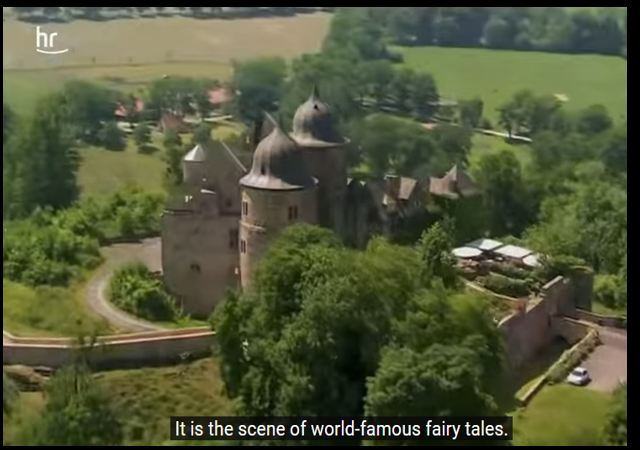Green Destruction: German Forest that Inspired Grimm’s Fairy Tale Being Felled for Wind Turbines

The energy suicide of Germany is rapidly becoming legendary.
Legal Insurrection readers will recall that the nation shuttered its last nuclear power plant in 2023. The German government decided to double down on net-zero dreams and renewable energy promises.
Germany is already big on wind: with nearly 30,000 onshore wind turbines, the country trails only the US and China.But it’s not enough to meet the country’s climate goals. Today, only 0.8% of Germany’s land area is approved for onshore wind energy. By 2032, the government wants to have 2% of land area allocated for onshore wind power. This means installing between 1,000 and 1,500 new turbines a year, or four to five a day by 2030, as German Chancellor Olaf Scholz recently said.Germany needs wind energy to meet its goal of becoming carbon neutral by 2045, a target it’s currently in danger of missing, according to multiple studies. The country also missed its emissions reduction targets the last two years in a row, according to think tank Agora Energiewende.
And here we are. A famous forest that inspired Grimm’s fairy tales is being felled for wind turbines.
A large area of Reinhardswald, an ancient German forest featured in the fairy tales of the Brothers Grimm, is being partially cut down in favour of 241-metre tall wind turbines.Following a months-long construction freeze, administrative courts have allowed heavy machinery to raze parts of the forest, including some trees that are more than 200 years old.Around 120,000 trees in the 200km² mountainous woodland in the Weser Uplands in the district of Kassel, Hesse, are said to have been condemned to the axe.The destruction comes at the request of the Green Party, citing the need for more “green” energy as a reason. Mayors in the vicinity are opposing the move.
The central European country is sacrificing part of its natural and cultural heritage on the altar of implausible (impossible?) “net-zero.”
However, those aren’t the only negative impacts from the energy-suicide Germany is committing.
Many factors contribute to the skyrocketing costs in Germany for electricity and natural gas: Russia’s invasion of Ukraine and the resultant sanctions, as well as the destruction of Nord Stream pipelines, for example. But one of the biggest drivers has been Germany’s net-zero energy policy, Energiewende, and the country’s rapid move to variable renewables, wind and solar, for electric generation. They necessarily require backup generating capacity, since the wind doesn’t blow and the sun doesn’t shine all the time.That’s usually provided by fossil fuel or nuclear power plants, but Germany passed legislation in 2019 to shut down all its coal plants by 2038, and last year the country shuttered the last three plants in its once-formidable nuclear fleet (in 1990 nuclear provided a quarter of Germany’s electricity).As a result, the country has been forced to import electricity and natural gas at substantially higher prices. Germany has recently been delaying planned closures of coal plants and is now also planning new gas plants as well, but the damage has been done. Germany now has some of the highest prices for electricity in the world.As a result, the entire German economy is in the doldrums. Growth forecasts for this year were recently slashed to just 0.2%, and as inflation is forecast to come in at about 2%, that implies actual economic contraction. Other indicators are also dire, with orders at German engineering firms and overall foreign investment dropping dramatically.
I recall a time when protecting “old growth forests” was critical to protecting the planet.
Trees play an important role in the fight against climate change. They capture and store carbon in their biomass — their roots, stumps and branches.According to new European research, when it comes to a tree’s climate benefit, as a tree get older it also stores more carbon.The University of Hamburg study suggests that old trees know best. Researchers studied unmanaged tropical forests in Suriname, on the northeastern Atlantic coast of South America, and looked at three different species of trees that ranged in age from 84 to 255 years old. They aren’t the oldest trees on the planet, but they make up a complete wilderness of unmanaged forests.The study found that the older a tree is, the better it absorbs carbon from the atmosphere. In fact, the research suggests that almost 70 per cent of all the carbon stored in trees is accumulated in the last half of their lives.
I find it fascinating that there are no eco-activists blockading the roads into Reinhardswald or tying themselves to trees. If they were truly interested in environmental protection, especially a sensitive forest ecosystem, they would take a break from their tire-slashing and defacing of masterpieces.
Of course, German farmers may pick up the slack. They are not enamored of the green energy dictates and seem willing to push back.
CLICK HERE FOR FULL VERSION OF THIS STORY